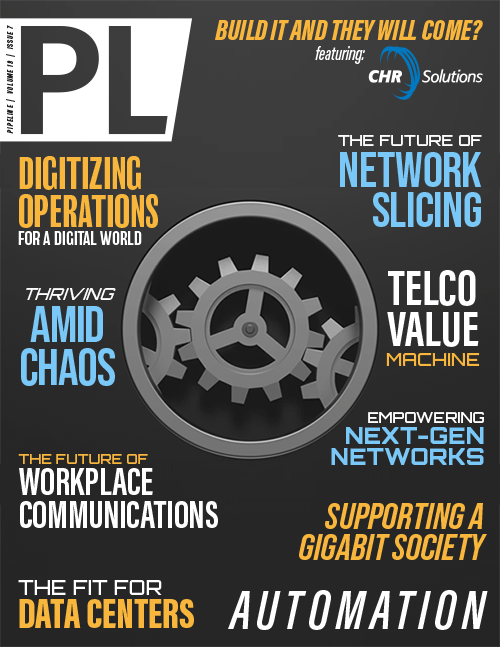Making Data Centers Fit for the Future
5G speed must also last
in the data center
In both Industry 4.0 and autonomous driving, the spread of the new 5G wireless standard could provide a boost in the next few years. For the first time, the low latency of a few milliseconds at 5G is suitable even for hard real-time applications. The specified latency of 5G also has an impact in the data center because the latency must be maintained even after entering the data center. This is only possible, however, with modern hardware and appropriately designed fiber optic cables. While small-cell mobile antennas outside the data center transmit the data, fiber optics must lead to the data center, which in turn uses a fast fiber optic cabling system.
AI further increases data volume
The increasing focus on data analytics for big data and artificial intelligence (AI) algorithms is also impacting data center infrastructure. Especially for AI applications around image recognition from photo and video streams, the storage and computing requirements are considerable. As the trend is toward clustered computing performance and increasingly powerful hardware, supercomputers are on the rise. For fast communication between servers in computer networks, high-performance data cabling is crucial. The better and more widespread AI algorithms become, the more the demand for computing power increases.
Adaptable to future technologies
Although data cabling accounts for only around two to four percent of the costs for new data centers, availability stands or falls with the quality of data transmission. Experience over the last three decades shows that around half of all data center failures are caused by the inadequate quality of the connection technology. The higher the demands on the data center, the more important application-neutral and future-oriented data cabling becomes, which can cope with higher speeds and can be flexibly adapted to future protocols and connectors.
As in the past, data cabling will continue to be based on the transceivers. Experience has shown that it is worthwhile here to orient oneself to the Multi Source Agreement (MSA) working groups in Silicon Valley. As the next singlemode stage on the "Terrabit Mountain" illustrated in the Ethernet Roadmap, 800G-DR8 and 800G-PSM8 are rated as promising variants of the coming 800G applications.
Security remains a decisive topic
The topic of security also remains a challenge to which data center operators must find answers. Bending-resistant fiber optics in particular are proving to be more resistant to eavesdropping technology based on bending coupling. To exclude cyberattacks or espionage, however, continuous performance monitoring of the networks is necessary in addition to comprehensive encryption. Security-as-a-service (also known as managed security) can provide relief. In this case, complex monitoring and prevention tasks are outsourced and the security knowledge in the SOC (Security Operations Center) of a specialized provider is accessed.
Environment, Social, and Governance (ESG)
ESG has gained extreme traction in 2021, and for good reason. Data centers account for approximately 2 percent of the total U.S. electricity use, and as the use of information technology grows, data center energy use will also grow. Data centers have been implementing renewable energy solutions utilizing modern technologies, but renewable energy alone can’t solve data centers’ impact on the environment. This is where ESG comes into play, allowing data center companies to get a holistic view of their company and understand the impact they have on the environment, their constituents, and the surrounding communities. More companies are taking accountability for the impact of their data centers by adopting ESG initiatives and creating streamlined roadmaps to dramatically reduce their carbon footprint. Data center companies are recognizing that technology providers, small and large, must take action toward a low-carbon future. Companies must target sustainability, seek innovative ways to reduce emissions, and influence renewable generation at every level.



















